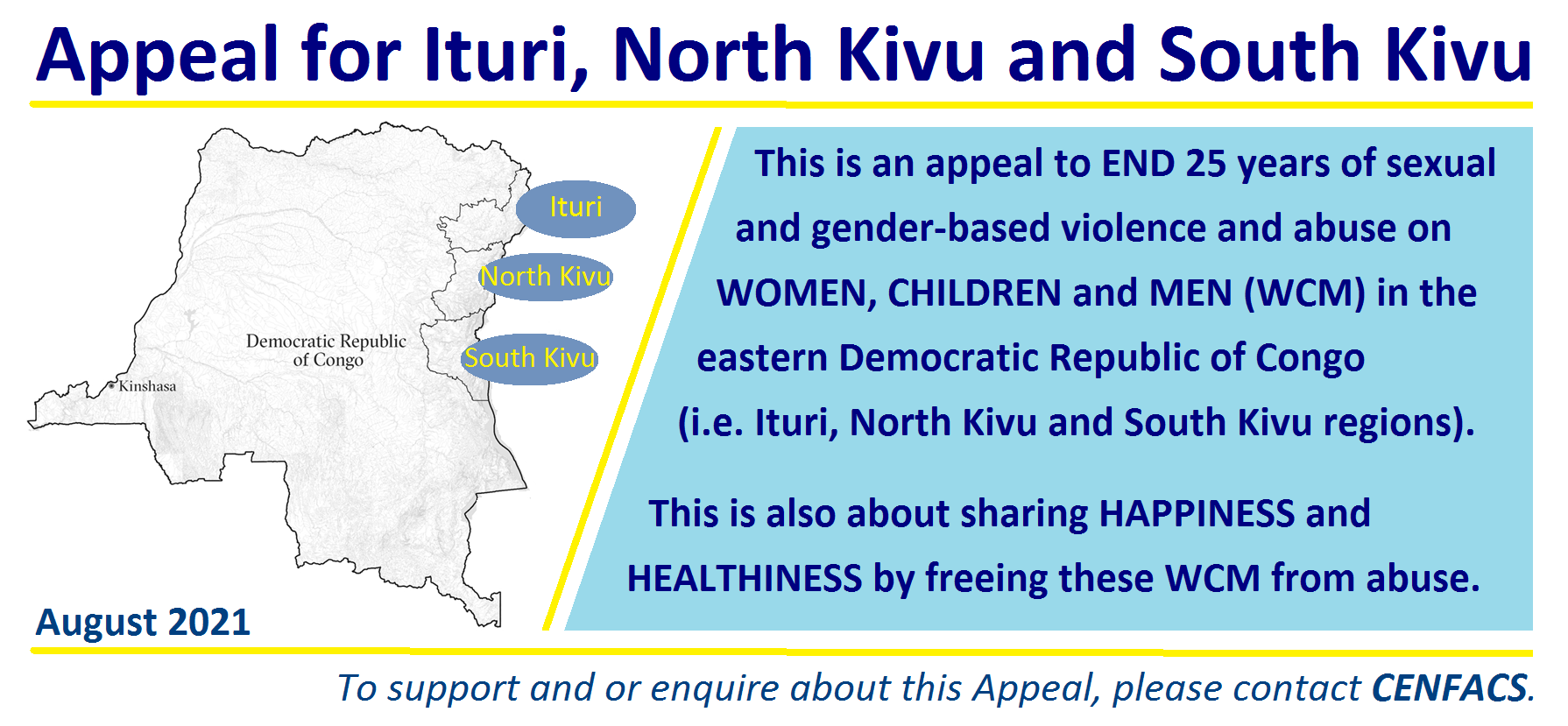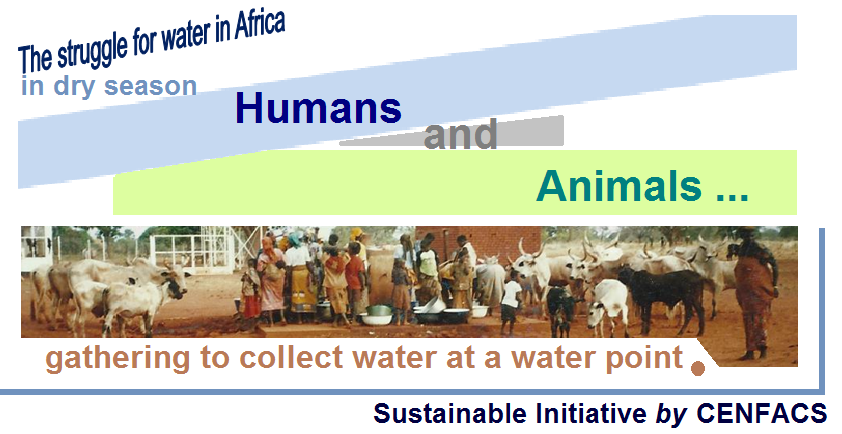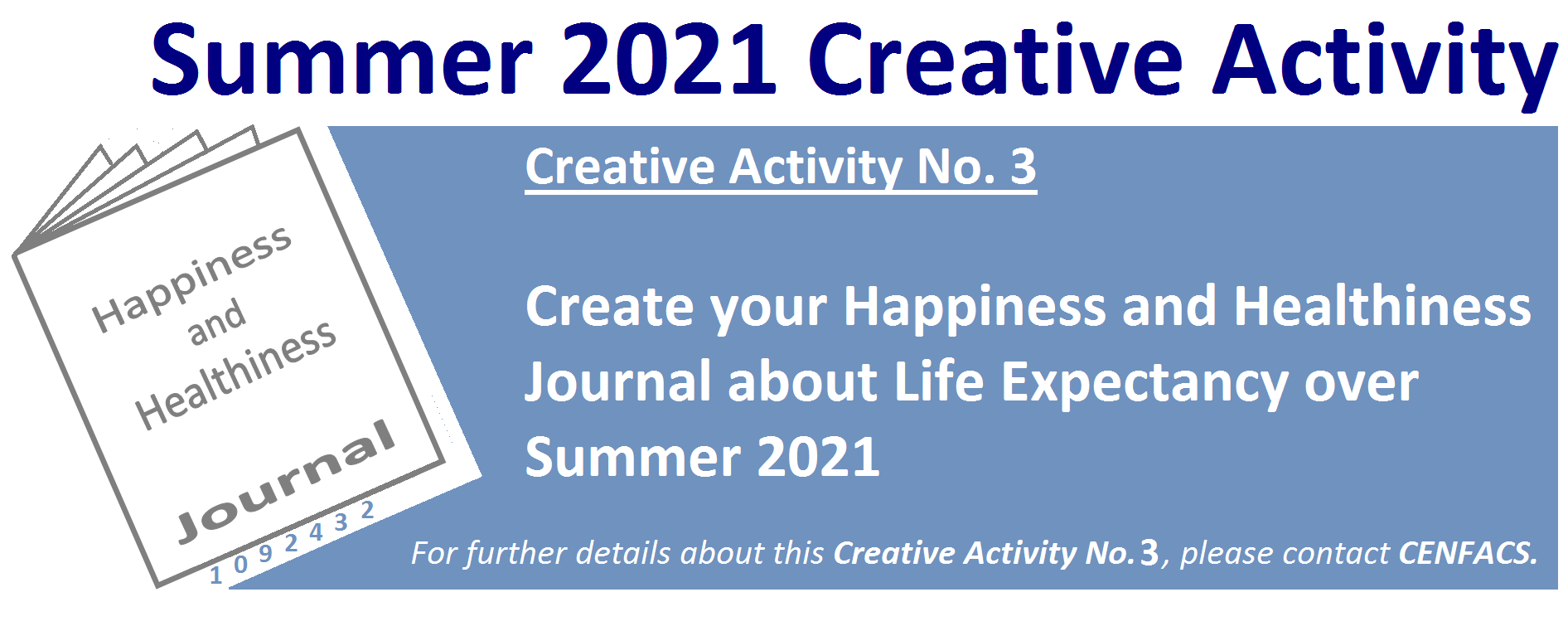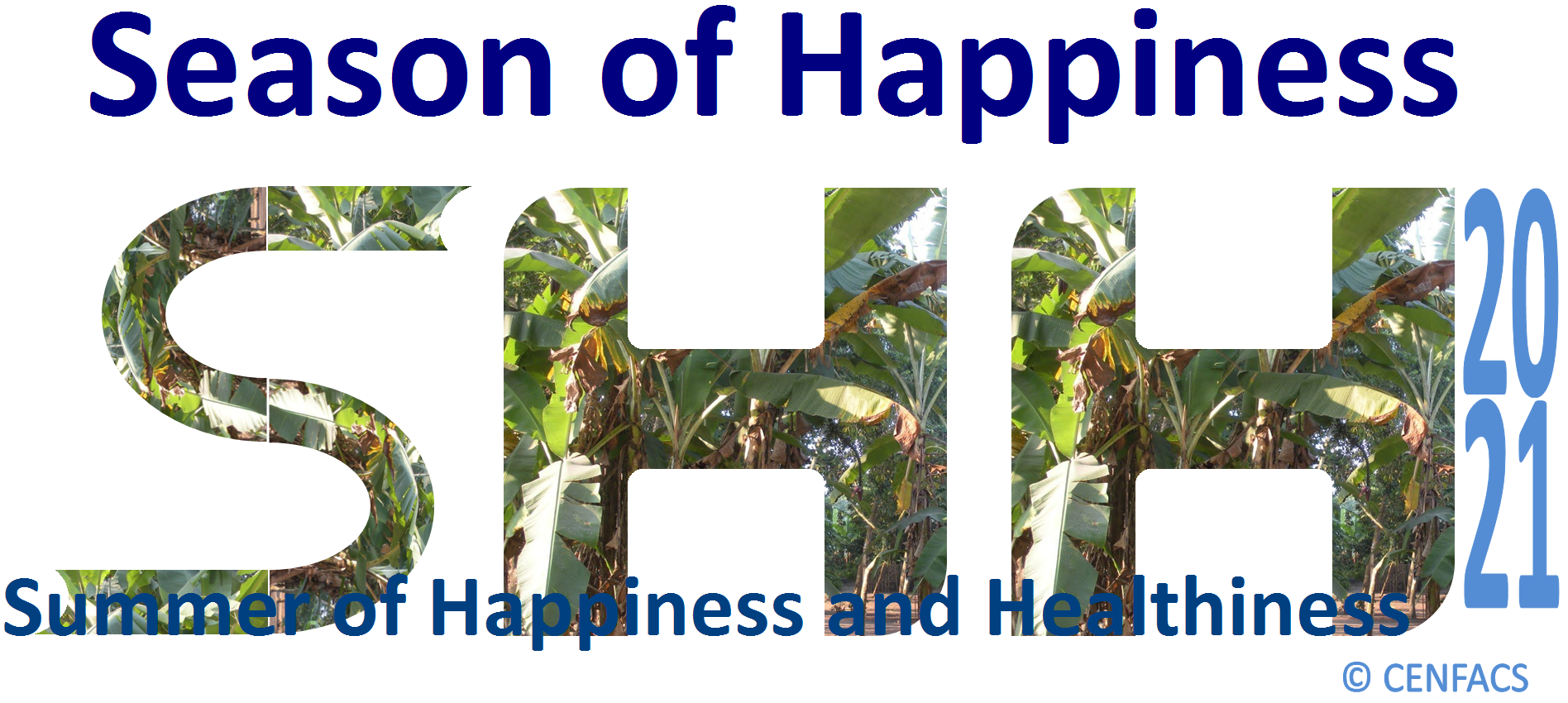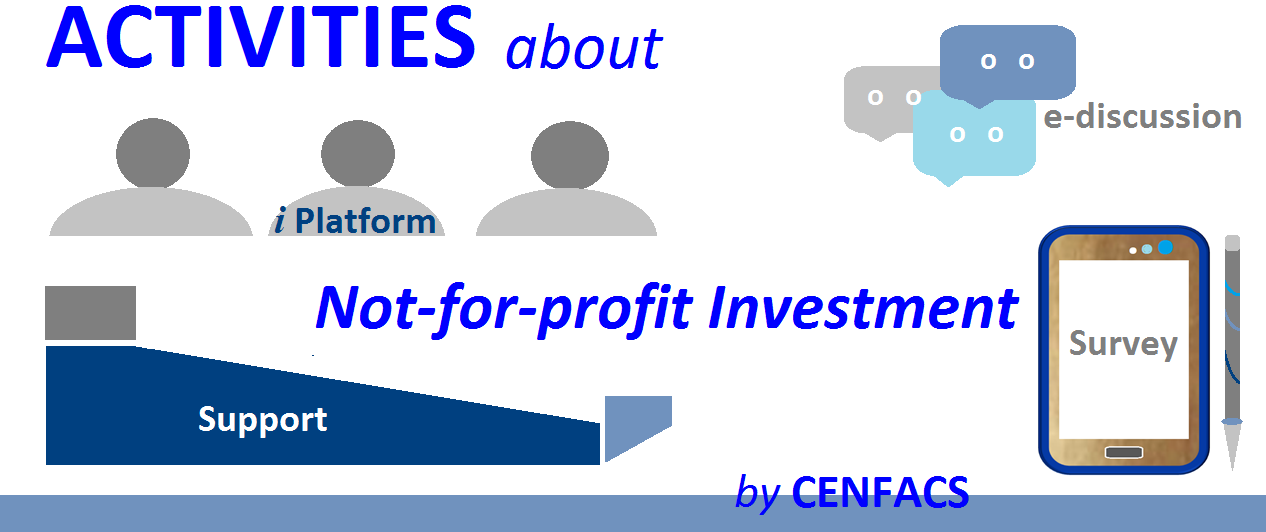Welcome to CENFACS’ Online Diary!
18 August 2021
Post No. 209
The Week’s Contents
• African Not-for-profit Investment Fund Project
• Following the Direction of Poverty Reduction this Summer via Natural Capital Assets, Trending Topic in Focus from Week beginning 16/08/2021: Freshwaters
• Happiness and Healthiness Journal, Creative Activity No. 3: Create Your Journal of Happy and Healthy Life Expectancy
… And much more!
Key Messages
• African Not-for-profit Investment Fund Project
We are carrying on with the work on not-for-profit investment in Africa, particularly with the planning process of African Not-for-profit Investment Fund Project (AN4PIFP).
AN4PIFP is project designed to support our Africa-based Sister Organisations and African organisations of similar aim so that they can find the means in terms of investment to continue to help to lift more people out of poverty while surviving and sustaining the game of the African Continental Free Trade Area (AfCFTA).
Although it is called investment fund, the project is more than just a fundraising drive as it is about helping organisational beneficiaries to develop their capacity to sustain in the game of the AfCFTA. Amongst the capacity they need to develop is that of absorbing the quantity and quality of investment they would like to get.
Under the Main Development section of this post, we have given the key summaries or highlights making proposals linked to this project. For any queries about this project, including funding it, please do not hesitate to contact CENFACS.
• Following the Direction of Poverty Reduction this Summer via Natural Capital Assets, Trending Topic in Focus from Week beginning 16/08/2021: Freshwaters
Freshwaters (i.e. rivers, lakes, ponds, ground-water and wetlands), which are part of natural capital assets, can be studied in the process of following the direction of poverty reduction. In order to do that we are going to consider the following: the meaning of water poverty, freshwater in Africa and how people are trying to reduce water poverty at the time of enduring COVID-19.
• • What is water poverty?
To define water poverty, we have selected the following definition given by the Digital Economy Act of 2018 (1):
“A person living in water poverty is a member of a household living on lower income in a home which cannot be supplied with water at a reasonable cost or cannot be supplied with sewerage services at a reasonable cost”.
From the above definition, it is clear that when a person or household is at risk of not being able to afford water and or sewerage bills, one can argue that this person or household is water poor. Many water poor people are found in places or regions of the world that suffer from drought or dryness. Africa is not exempt from these places or regions. Some of CENFACS’ Africa-based Sister Organisations work in those places where they run water projects.
• • Freshwater resources and poverty reduction in Africa
It emerges from the United Nations World Water Development Report (2) that
“Africa’s freshwater resources are estimated to be nearly 9% of the world’s total. However, these resources are unevenly distributed, with the six most water-rich countries in Central and Western Africa holding 54% of the continent’s total resources and the 27 most water-poor countries holding only 7%” (p. 6)
In the same report, it is argued that
“About 73% of the total population of Sub-Saharan Africa did not use safely managed drinking water services in 2017 (WHO/UNICEF, 2019a). An estimated 14% of Africa’s population (about 160 million people) currently live under conditions of water scarcity (Hasan et al., 2019), due in part to the uneven distribution of water resources as well as inequalities in the access to clean and potable water services (UNEP, 2002)” (p. 108)
Although some of these figures relate to many years down the line, it is possible to argue that the ability of many people to access safe drinking water is still a stiff challenge. Many places are lacking basic water services.
Many people and communities are trying to collect water from the following: improved sources of around 500 metres of their premises, unprotected dug wells or springs, surface water sources, rainwater, packaged or delivered water, etc.
At this time of the coronavirus, the situation in terms of accessing water could even be worse since the coronavirus has wiped out hard-won many years of poverty reduction, including those of water poverty reduction.
• • How people are trying to reduce water poverty at the time of enduring COVID-19
Water is essential for sustaining agriculture, the ecosystems and security for the community. The lack of water can lead to conflicts and insecurity. Yet, water poverty is still a major issue since many poor people may not have secure and sustainable access to water resources and are not involved in the governance of water resources.
At the time of the coronavirus pandemic, water helps to fight the virus and protect everybody against the spread and transmission of this disease. We need water to wash our hands and disinfect our properties in the process of fighting the coronavirus pandemic. This is let alone to fight the water borne diseases.
Concerning the way in which people are trying to reduce water poverty, let us simply argue that we have many examples about how the beneficiaries of Africa-based Sister Organisations are trying to collect (either from a water collection point or from the river or from the rain) and share water in the fight against the coronavirus. They are doing it while being asked to follow the coronavirus restrictions and rules. To this, one needs to add irrigation projects to bring water to communities deprived from water resources.
Many African local authorities made efforts to help local population to access safe drinking water in the fight against the coronavirus. However, these efforts are still short to cover the entire water poor population.
To sum up, there is more to argue when following and studying the direction of poverty reduction via fresh water as a natural capital asset. In this argument about freshwaters, one can speak about customary rights for access to water, blue alignment to greenhouse gas emissions reduction, the relationship between human and animals regarding the share of freshwaters or water resources, etc. For those who would like to speak about or go in depth about this, they can discuss freshwaters with CENFACS.
To support CENFACS’ trending topic of freshwaters and or any other trending topics developed so far, please do not hesitate to contact CENFACS.
• Happiness and Healthiness Journal, Creative Activity No. 3: Create Your Journal of Happy and Healthy Life Expectancy
COVID-19 has challenged, threatened and in some situations destroyed many lives and livelihoods. Life expectancy (that is the statistical measure of the average time someone is expected to live) has also been tested as many people got ill from the coronavirus pandemic or had to get double vaccinated or tested against COVID-19 germs. This can make people unhappy while feeling unhealthy.
So, as part of Summer of Happiness and Healthiness, one can create a journal for the things that and people who are bringing or have brought expectation of living a happy and healthy life during this Summer of enduring COVID-19.
They can record their thoughts, feelings, experiences and memories in relation to their life expectancy or the expectation of it. They can share with the community their experience of happy and healthy life expectancy. This can be recorded in their journal and be shared by the end of Summer 2021.
To share the contents of their happiness and healthiness journal relating to happy and healthy life expectancy, and help build a better Summer holiday experience, they can contact CENFACS.
Extra Messages
• Summer 2021 Activities, Projects and Programmes
We believe that everybody is enjoying their Summer break wherever they are and whatever they are doing, despite the enduring COVID-19 circumstances.
We also hope that those who are working over this Summer are getting on well with their work.
We finally trust that Summer 2021 Happiness and Healthiness Projects, including other Summer activities and programmes we have offered so far, are helping the community to happily and healthily pass this Summer.
For those who need any help or advice regarding any of the aspects of the Happiness and Healthiness Projects or any other Summer activities or programmes which are on offer, they should not hesitate to contact CENFACS.
We would like to reiterate our wish to all multi-dimensional Poor Children, Young People and Families of Happy, Healthy, Vulnerability-free, Peaceful, Safe and Sustainable Summer Days.
• Summer Triple Pack is Still Running
Our Summer Triple Pack made of Track, Trip and Trending continues this week. The key message we would like to get across this Triple Pack is to try to help reduce poverty by undertaking any of these three activities: running, visiting projects and analysing trends. Let us make some reminding points about each of them.
• • COVID-19 Secure track to help reduce continuing sanitation poverty
This activity of the pack is about COVID-19 Secure Run 2.5 miles (nearly 4 km) to save healing leaves and support those who get or got relief from poor health or poor sanitation via herbs, leaves and plants in a Summer of enduring Covid-19.
For those who have completed their 2.5 miles of running, please do not hesitate to share with us your experience. This activity is also performed under August 2021 Leafy Activities.
For those who are deprived to physically run, they can virtually run to help reduce poverty with CENFACS. Among them are people who may be experiencing handicap to do physical activity of running to help reduce poverty. One could include the following:
People or parents caring for very young children, pregnant women, elderly people, disable people, those who are not physically fit or mobile to run, those who do not have opportunity to physically run, etc.
If you are organising this kind of virtual activity or event, let us know. It is also better to advise us that the people participating in the virtual run are the physically deprived ones we have listed above or they have a serious handicap prohibiting them from undertaking any physical engagement.
• • Virtual or In-person Trips to Hybrid Running Projects and Covid-19 hit locals
As part of Leafy Activities of the month, we have suggested to undertaking virtual or in-person Visits or Tours of 3 leaf projects or activities relating to Covid-19 hit local people or communities.
These virtual visits are not only online recreational activities. They are also a learning and development process in terms of understanding the following:
√ The way in which Covid-19 hit people or communities, particularly those who are undertaking coping and survival strategies via leaves to eradicate Covid-19-induced poverty and vulnerability
√ What is needed to help them overcome the problems they have
√ What lessons that can be learnt and shared from their coronavirus pandemic experience and from those using leaves to improve future actions, planning and decision-making
√ The demand in terms of policy development and response to meet similar needs in the future
Furthermore, Virtual Trip as part of our Summer Triple Pack includes field work research in Africa and anywhere else in the context of poverty relief and sustainable development projects.
For those who are having or have had these experiences and results of field work research, please do not hesitate to share them.
• • Online Trending by following the direction of poverty reduction via natural capital assets
The focus for this third part of our Summer Triple Pack is on Fresh waters for this week. We are looking at how better management of freshwater resources can contribute to livelihoods of poor local communities. It is about finding out how access to fresh water and fresh water supply can be a way of eradicating poverty and hardships.
Through this trending activity one can come to know how many people have been lifted out of poverty during this Summer of changing climate and enduring COVID-19.
Additionally, as part of CENFACS’ Leafy Year and Project, we have asked to those who can to carry out online search to find 6 natural leaf Trends in the contexts of leaf-related poverty alleviation and leaf-enhancing sustainable development.
In all this Summer Triple Pack, Covid-19 restrictions and rules must be followed, respected and maintained in terms of regular hand washing with sanitizer, social distancing and wearing a face covering regardless of whether one is fully jabbed or negatively tested against the coronavirus pandemic.
• Activities about the Not-for-profit Investment and Development
There are four activities we are conducting in the context of not-for-profit investment and development. They include: market research, survey, e-discussion and investors’ platform of talks. They are also part of the planning process of the project of African not-for-profit Investment Fund.
∝ African-focused not-for-profit investors’ platform
To encourage not-for-profit investment drive for not-for-profit organisations, CENFACS can facilitate investors to talk to African not-for-profit organisations.
∝ E-discussion on capacity development
Not-for-profit organisations that need capacity development (including investment absorption capacity development) can e-discuss the matter with CENFACS.
∝ Online focused support
You can support CENFACS with your gift ideas about scopes and limits about poverty-reducing effects of not-for-profit investment.
To support, just contact CENFACS.
∝ Survey on the role model of not-for-profit investees
You can take a challenge by describing, in twenty seven words, the portrait or prototype of African not-for-profit organisation that would be the best user of not-for-profit investments in the African Continental Free Trade Area.
To take part in these activities and or to discuss any issue about them, please contact CENFACS.
Vous pouvez suivre avec le CENFACS l’orientation de la réduction de la pauvreté au moyen d’actifs immobilisés naturels. Pour le faire, s’il vous plaît contactez le CENFACS.
Main Development
• African Not-for-profit Investment Fund Project
The following are the key summaries/highlights of the African Not-for-profit Investment Fund Project (AN4PIFP). To make it easier for our potential funders and readers, these summaries/highlights do not include project management tools (such as the logical framework approach/analysis, project cycle, etc.).
• • The AN4PIFP in brief
The AN4PIFP offers information, guidance, advice, support, fundraising and networking opportunities to not-for-profit African organisations based in Africa to access investment opportunities while developing their capacities. Through this project, these organisations can increase their poverty reduction results and presence/participation to the African Continental Free Trade Area (AfCFTA).
• • Project overall aim
Its overall aim is to create and expand poverty reduction services and products within the AfCFTA.
• • Project components/activities
The AN4PIFP is about pooling money from not-for-profit investors and spreading risk associated to poverty reduction intervention by running the following activities:
√ Translate the contents of poverty reduction services and products into and to meet local needs
√ Support the capacity development of not-for-profit African organisations, including their investment absorption capacity and multi-national capacity
√ Attract and direct investments towards not-for-profit African organisations
√ Keep pace with the implementation of sustainable development goals at the level of African not-for-profit organisations
√ Promote green and blue alignments to greenhouse gas emissions reduction goals and targets of any initiatives to lift more people out of poverty
√ Include poverty reduction aspects in any investments protocol and agenda
√ Build and improve the profile of not-for-profit African organisations to attract foreign direct investments
√ Develop an investments plan and strategy via a business plan
√ Link investments to nature-based solutions to poverty
√ Access investments that reduce gender and generational disparities and poverty
√ Help in the generation of poverty reduction in bulk
√ Advance human development agenda from investments received or granted
√ Preserve and conserve the planet’s environmental regeneration through the terms of reference of investments to be acquired
Etc.
• • Project outcomes
As a result of the implementation of this project, one can anticipate the following changes and effects may happen:
√ An increase in the number of people lifted out of poverty and or poverty reduction in bulk
√ Reduction of gender and generational disparities and poverty
√ Closure of the investment gaps generated by COVID-19
√ Not-for-profit African organisations will become capacity-built and better armed with skills to handle the game of the AfCFTA
√ Better access to investment opportunities to deal with multi-dimensional and cross-border poverty
√ Greenhouse gas emissions reduction goals and targets reachable within deadlines
√ Better and more implementation of the United Nations sustainable development goals
√ Increase in the number of localised poverty reduction services, products and outlets
√ Boost in the multi-national capacity of not-for-profit African organisations to deliver poverty reduction services and products in more than one country
Etc.
• • Project indicators
The following qualitative and quantitative variables will help to produce reliable means to measure achievement, reflect changes and assess the performance of this not-for-profit investment project:
√ The index of contribution of the not-for-profit investment and development to poverty reduction
√ Rate of reduction of gender and generational disparities and poverty
√ Carbon foot print calculator resulting from green and blue investments
√ The number of not-for-profit African organisations that have gained access to investment as a result of the AN4PIFP
√ The percentage or number of people lifted out poverty because of not-for-profit investment and development agenda
√ The number of not-for-profit African organisations that will become skilful and capacity built
√ The expected multiplier effect leading to poverty reduction in bulk within the AfCFTA
• • Project beneficiaries
Generally, the beneficiaries of this project will be investment-deprived not-for-profit African organisations.
Specifically, the project will benefit Africa-based Sister organisation, their end-users and new users as a result of the game of AfCFTA.
• • Project funding status
So far, this project is unfunded. This means we are open to any credible funding proposals or proposition from potential funders or donors. It is known that the coronavirus pandemic has put a toll on everybody. However, those who would like to support this project will be more than welcome. Furthermore, because this project is a kind of investment fund we expect and invite many various donors to intervene.
To fully or partly fund this project, please contact CENFACS.
• • Impact monitoring and evaluation
As part of impact monitoring, there will be routine and systematic gathering and collection of information on all aspects of the project on specified indicators. This will enable to trace the on-going project development with identified clues in terms of progress and achievement. In other words, we will systematically collect and analyse information to keep regular checks and balances on the project in terms of progress in the use of investments or funds granted or given.
Likewise, we shall assess what the project will achieve in relation to the overall aim it was set up of creating and expanding poverty reduction services and products within the AfCFTA. This is to say that evaluation will be conducted regarding the efforts spent on this project to find out whether or not these efforts are value for relief from the lack of not-for-profit investment fund. This evaluation will help to determine the efficiency, effectiveness, impact, sustainability and the relevance of this project.
In proceeding in this manner, we will be able to measure the impact or at least the outcomes from this project.
The full project proposals including budget are available on request. It is known that this time of the coronavirus pandemic is a difficult one. The health and economic crisis instigated by the coronavirus pandemic has perhaps negatively impacted the flows of inward investment to Africa. However, for those who may be interested in this project, they should not hesitate to contact CENFACS.
_________
References
(1) Digital Economy Act of 2018, quoted by the Neighbourhood Energy Action at https://www.nea.org.uk
(2) United Nations (2021), The United Nations World Water Development Report 2021: Valuing Water, Paris
_________
Help CENFACS keep the Poverty Relief work going this year.
We do our work on a very small budget and on a voluntary basis. Making a donation will show us you value our work and support CENFACS’ work, which is currently offered as a free service.
One could consider a recurring donation to CENFACS in the future.
Donate to support CENFACS!
FOR ONLY £1, YOU CAN SUPPORT CENFACS AND CENFACS’ PROJECTS, JUST GO TO http://cenfacs.org.uk/supporting-us/
Thank you for visiting CENFACS website and reading this post.
Thank you as well to those who made or make comments about our weekly posts.
We look forward to receiving your regular visits and continuing support throughout 2021 and beyond.
With many thanks.

